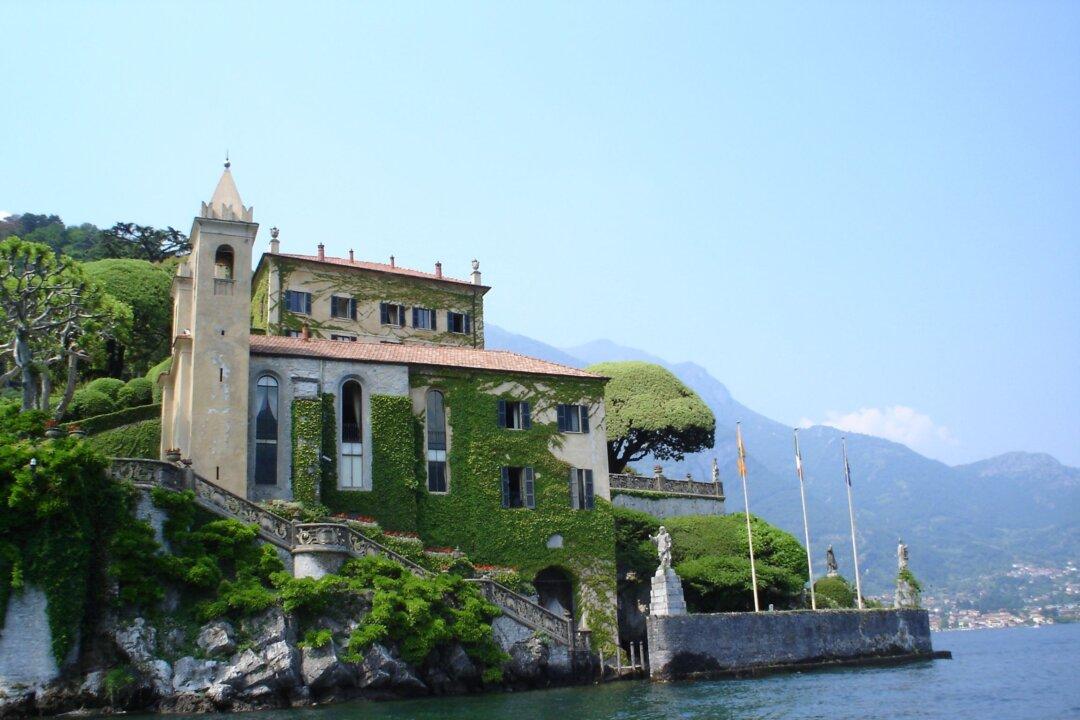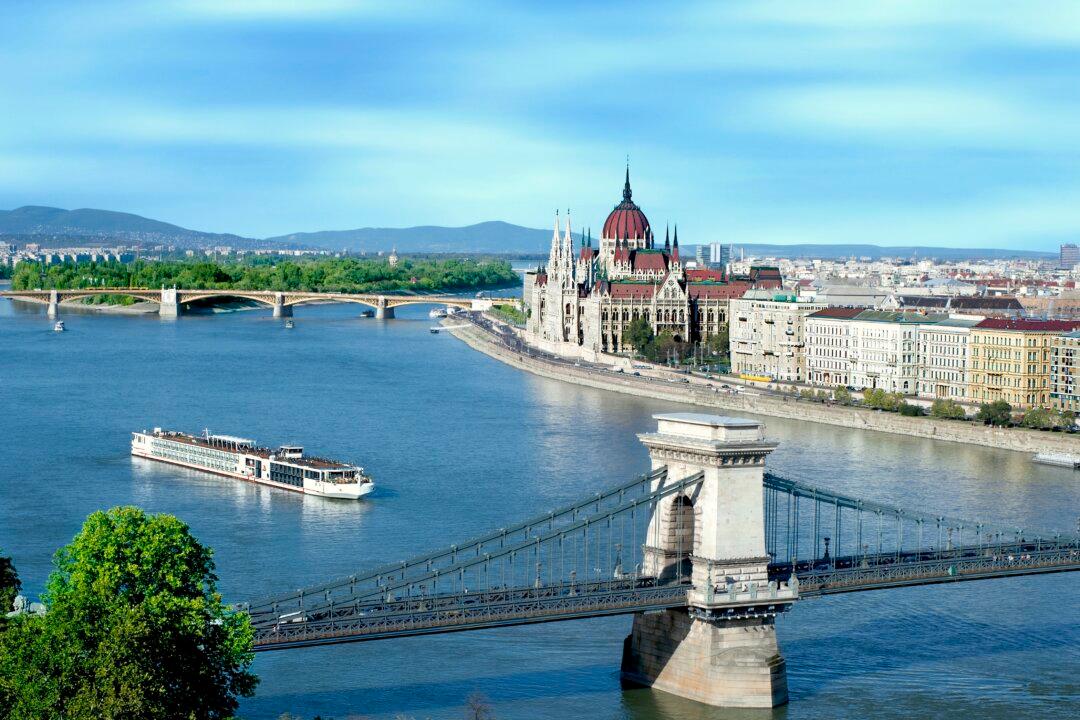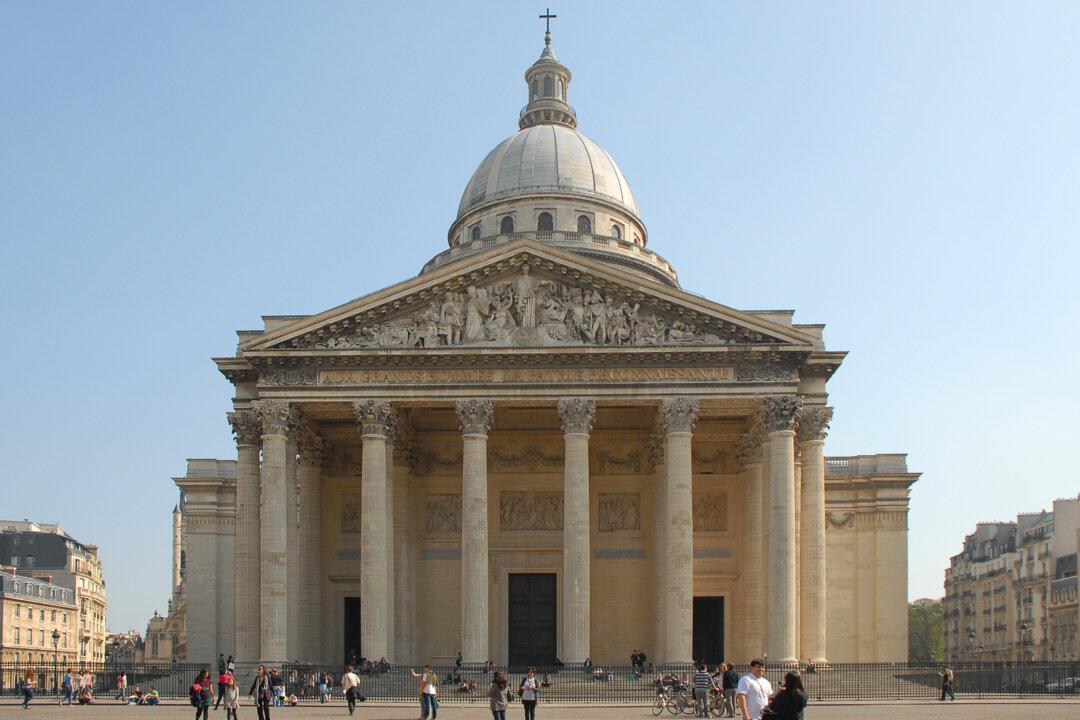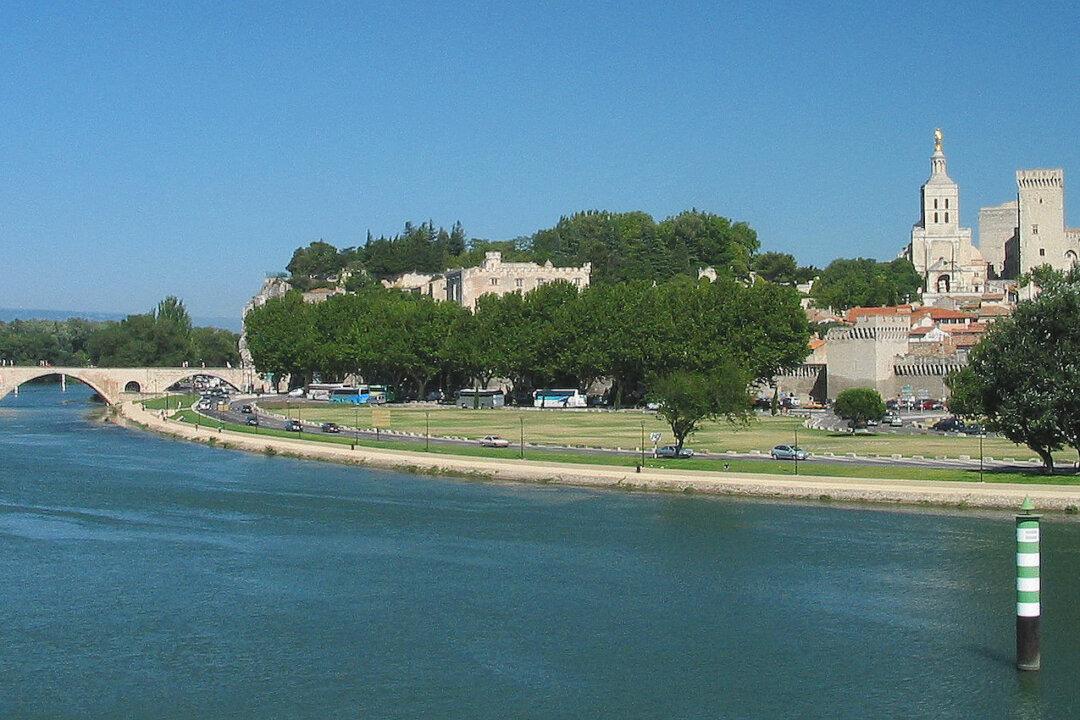Northern Italy’s Lake Como, where Hollywood heartthrob George Clooney owns a villa, is rich in artistic and cultural gems and has been a popular retreat for nobility and the wealthy since Roman times.
Como (the town) so passionately honors its native sons that statues of Pliny the Elder and Pliny the Younger flank the entrance of the cathedral. Pliny the Elder fished out of a window of his villa. The Younger was an enthusiastic killer of Christians, but classical fame trumped spiritual slaughter. It’s fun to wonder how Clooney may or may not be immortalized, but his $25 million lake-side villa is just medium-grand compared to its neighbors.
Villa Carlotta, dating back to 1690 and open to visitors, hosted Napoleon, who looks down from a ceiling fresco upon a marble statue of Cupid and Psyche sculpted by Canova, a replica of the original now in the Hermitage in St. Petersburg. Other Canova works, such as the Repentant Magdalene, are centerpieces of the ground-floor rooms. Villa Carlotta’s glory is its extensive gardens with 150 varieties of azaleas frothing down a hill.
Lanes Less Traveled
At the northern tip of Lake Como lies the village of Gravedona. The historic center begins at the harbor and can be reached by private or public boat from Como, Bellagio, and other towns around the legendary lake. Gravedona has an ancient castle and a 10th-century Romanesque church, a splendid view, and restaurants Rick Steves hasn’t discovered.
Memories are made in Gravedona, not souvenirs. A pleasant day trip from Como, situated at the southern end of the lake, could include a boat ride to Bellagio for some upscale shopping and a cappuccino. Take a photo of Clooney’s villa and visit Villa Carlotta along the way. From there, take a boat to Gravedona, where a short walk uphill provides a panoramic view of red tile roofs, the lake, and surrounding mountains. Then go down the winding stairs to Ristorante Ca De Matt, a 14th-century house that is now an intimate restaurant with a rooftop terrace.
Nearly everything on the menu at Ristorante Ca De Matt is grown or made within 3 miles. The restaurant is not part of the “farm to fork” craze—it predates it. The pasta is made in-house; the bread is from a local baker; the cheese, meats, and produce are from local artisans and farmers; and the fish is from the lake. The owner describes the food as “typical,” but typical here is extraordinary in cosmopolitan restaurants.





